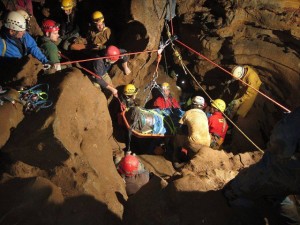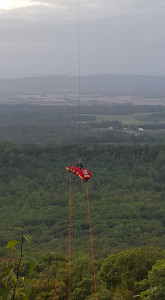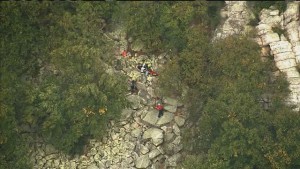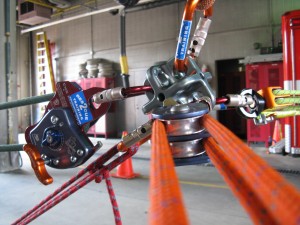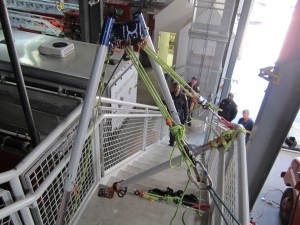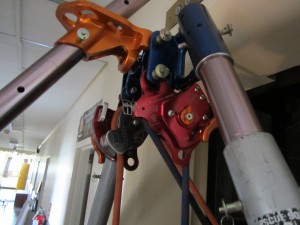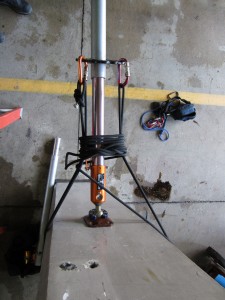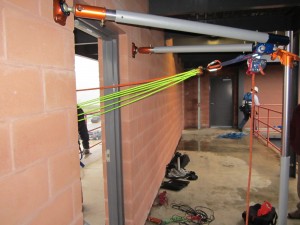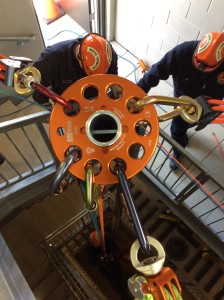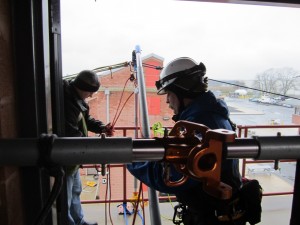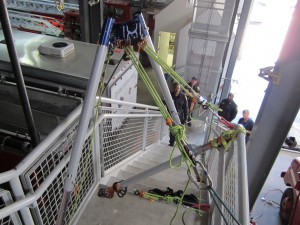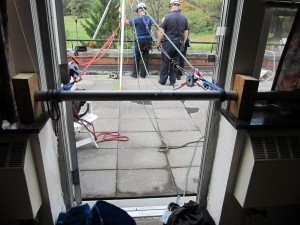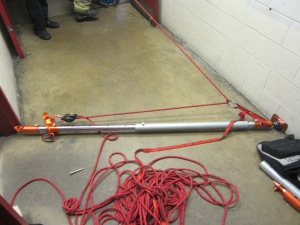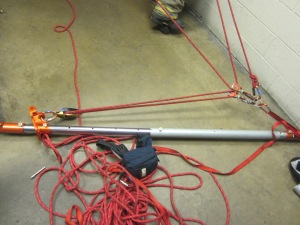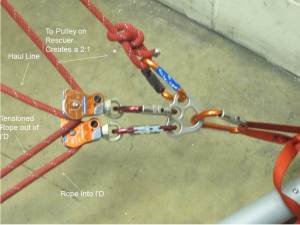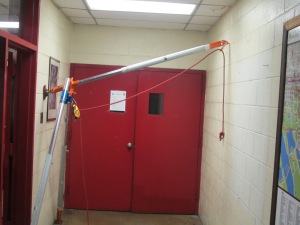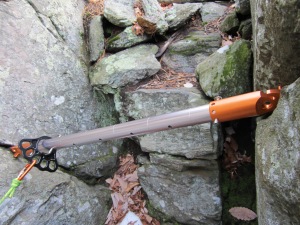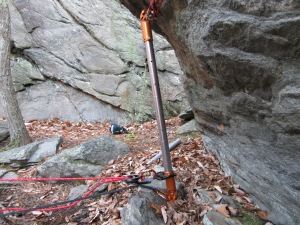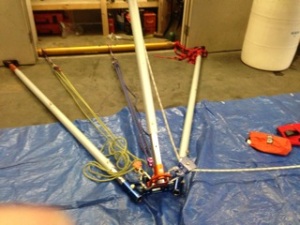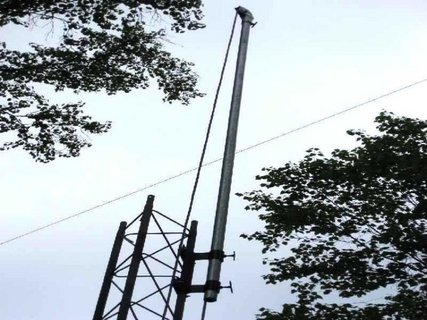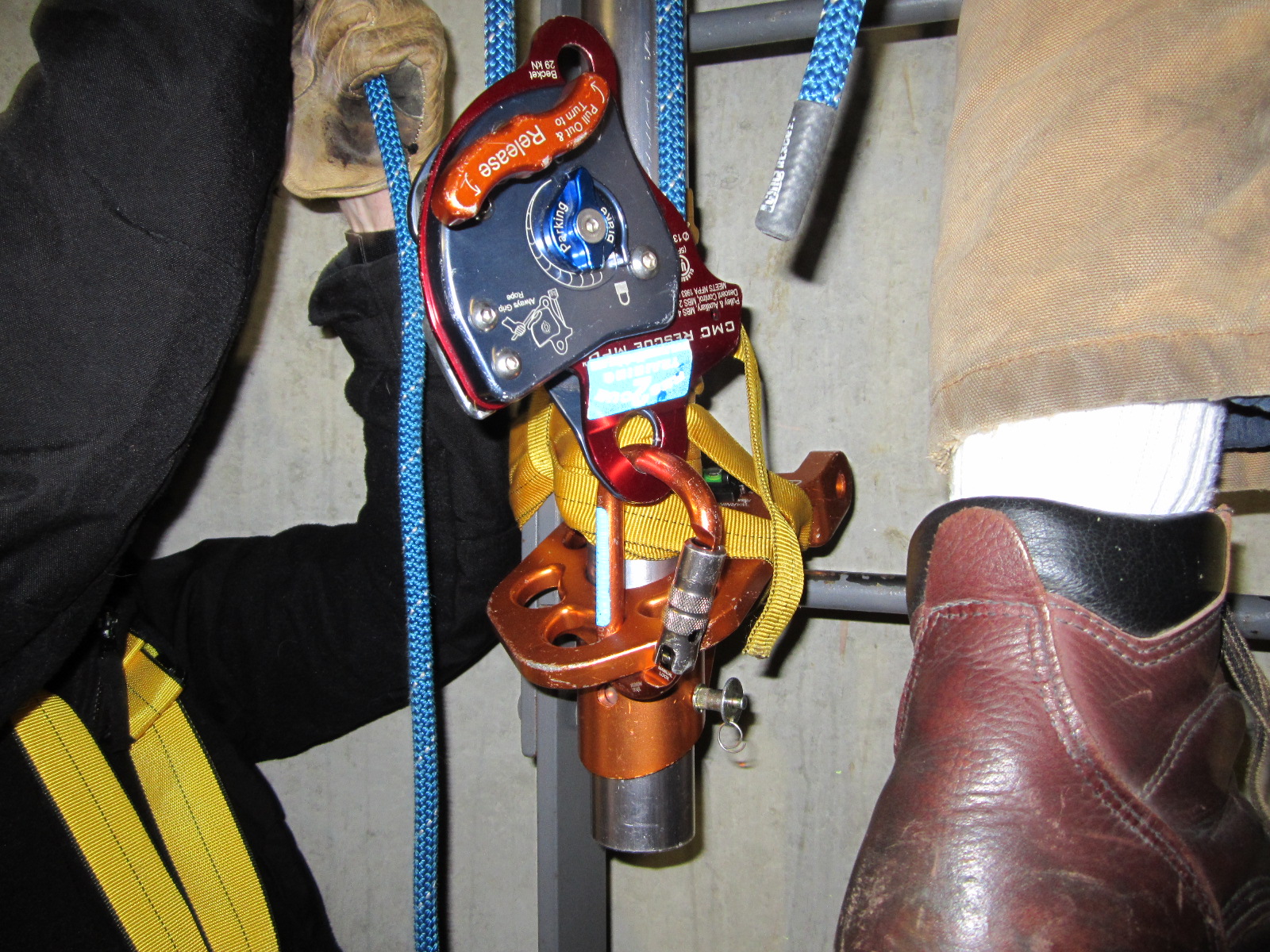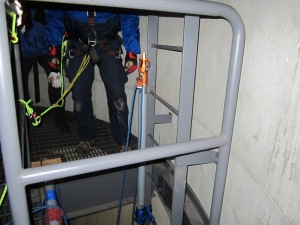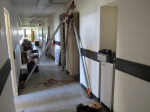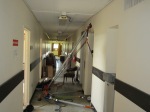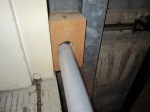After sharing a bunch of stories from around the world, here are two rope stories from the general where Rescue 2 Training is based out of.
The first story is of a cave rescue out of Monroe County, WV. The victim was approximately 4000′ inside of the cave when he fell approximately ten feet and broke his leg. A mere 8 hours and 75 members later, he was back outside of the cave and on the way to the hospital. A picture from one of the local news stations shows just how much rope work went into this rescue.
I wasn’t there, so I feel a little bad about Monday Morning Quarterbacking it, but… A picture is just a snapshot of one small moment in time, but from looking at the picture, it seems that there were a couple of missed opportunities to tighten up the rigging a little bit. For starters, the double overhand safeties on the 8’s seems like a bit overkill. Additionally, the bights on the 8’s are overly long. And if clearance is an issue, and I assume it is being in a cave, why not just tie direct to the litter bridle with a scaffold knot and get yourself an extra 1′ or more of additional space? Those minor quibbles aside, to looks like it was a difficult rescue and that they had to construct a highline in a cave just to provide a high anchor point to pull him up.
Even closer to home is the report of a man who fell 75 feet down Sugarloaf mountain while hiking and then had a seizure. Being on the dividing line between two counties, both Frederick and Montgomery County units assisted with the helicopter evacuation flown by Maryland State Police. I’m not sure about Mont. Co, but I know for certain the the Frederick County ATR (Advanced Technical Rescue) team does perform regular drills with the MSP helicopters in order to perform on these types of calls without any confusion. If your agency has the potential to run extract calls with a helicopter, do you have any special training to make sure nothing goes wrong when the helicopter shows up?
From the Frederick ATR Facebook page (cool video there of rescuers perspective too):
An interesting point from the news interview in the link below: When asked if he would go hiking again, the man who fell said that he probably wouldn’t do it unless he go there proper footwear and even then, would only stay on the trail. That’s an interesting point that might be lost on most people who have no idea why they might have fallen. Good for him for being self aware!
http://www.fox5dc.com/news/local-news/26972833-story

